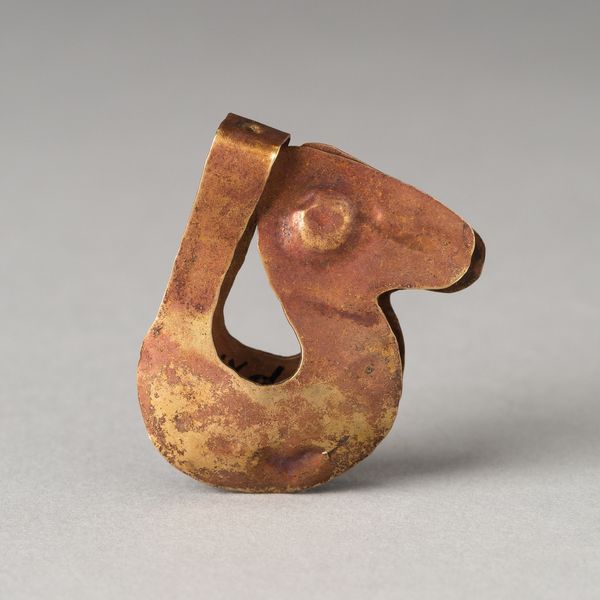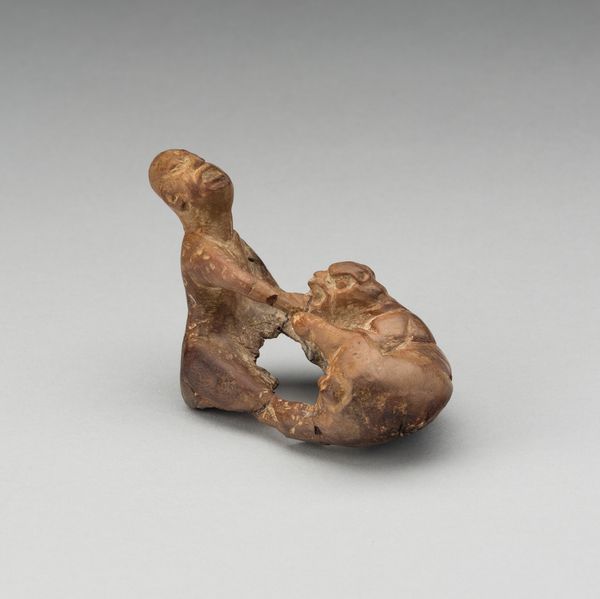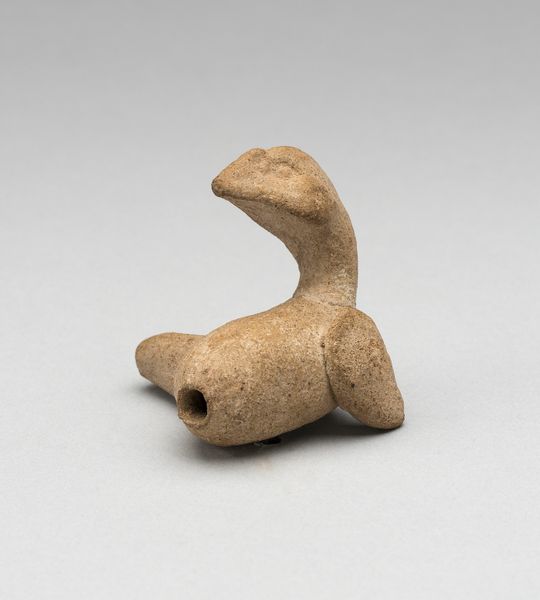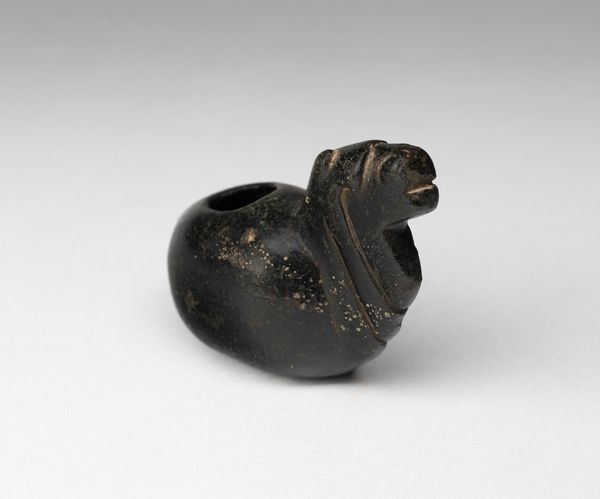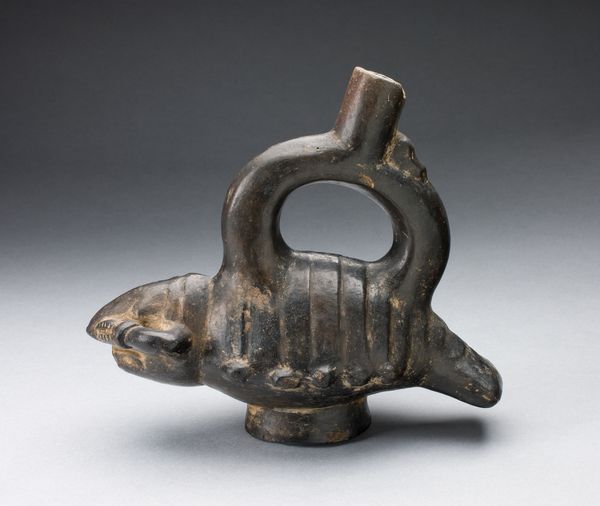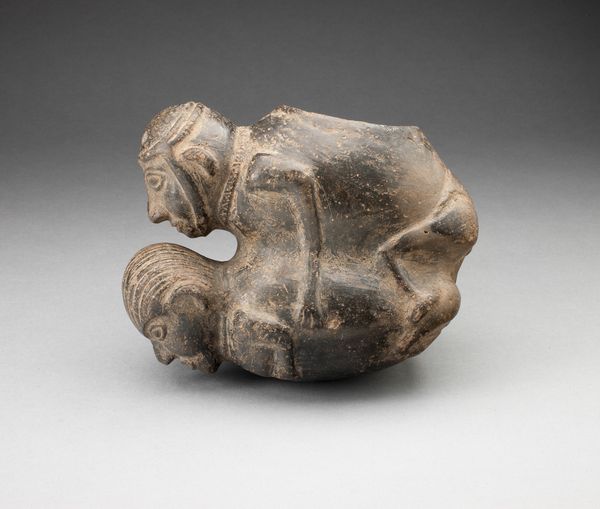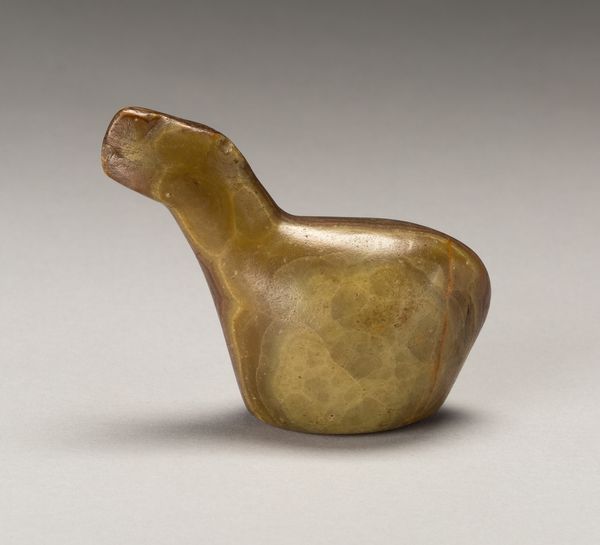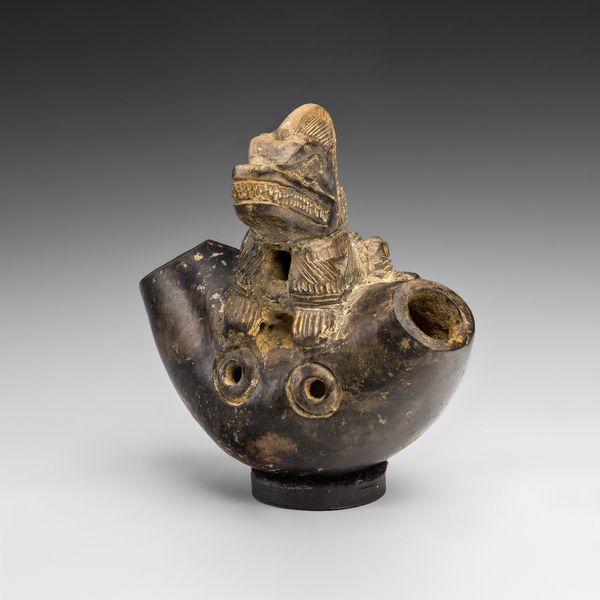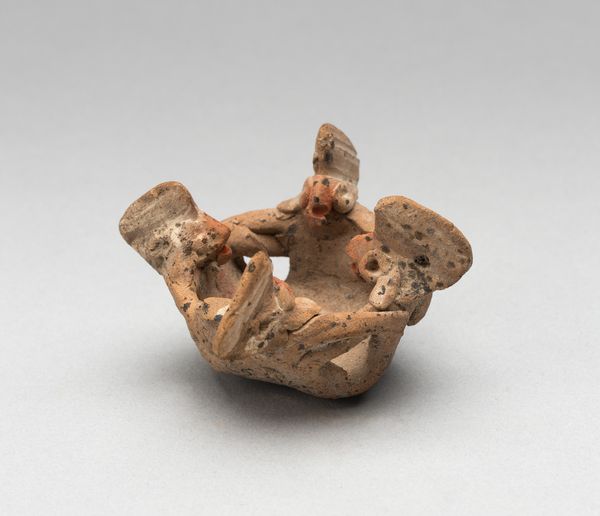
metal, gold
#
metal
#
gold
#
indigenous-americas
Dimensions: L. 3.5 cm (1 3/8 in.)
Copyright: Public Domain
Curator: Let’s discuss this intriguing object from the Chimú culture. These “Tweezers in the Shape of a Bird” crafted from metal, date back to about 1000-1400 AD. The anonymous artist who created this small functional object integrated both form and function into an elegant whole. What’s your immediate take? Editor: It appears both delicate and utilitarian. There’s something disarming about seeing such care and craft applied to what would otherwise be an ordinary object. One has to consider labor conditions and hierarchies during that period. How was value assigned and experienced in the lives of the everyday people in the Americas during the second millennium? Curator: Function is really foregrounded by its bilateral symmetry and reductive form. Observe how the artist streamlined the bird's shape; there’s a calculated efficiency here. The lines flow so naturally, from the bird’s head to the grasping end of the tweezers, the geometry feels utterly balanced. Editor: Exactly. Everyday objects, however beautifully crafted, provide insight into societal values. Did its users come from a particular gender, class, or cultural affiliation? Who, precisely, had the luxury of using bird-shaped tweezers? The form can only take us so far in terms of our appreciation and comprehension of this indigenous cultural production. Curator: Certainly, questions of context are relevant, and ones we’ll keep researching. However, let’s appreciate for a moment the ingenious blending of avian representation and metallic materiality. Look how the curves of the bird’s body mirror the functional arc of the tweezers themselves. I would be interested to see how semiotic approaches may further help decode the message inscribed in the use of this avian representation. Editor: Fair enough. But I can’t ignore that beauty often masks power structures. Examining the metadata behind an object can clarify a relationship between form and function that speaks beyond its mere aesthetic appeal. A continued emphasis on function allows us to interrogate both colonialism and industrial production, as we deconstruct embedded hegemonies in our increasingly technologized world. Curator: Well said. It reminds us that close formal analysis and nuanced historical understandings can reveal rich tapestries of meaning in what might first appear to be, quite simply, beautiful. Editor: Ultimately, what may seem like a straightforward object becomes a complex gateway to considering labor, power, and personhood within a vanished world.
Comments
No comments
Be the first to comment and join the conversation on the ultimate creative platform.
